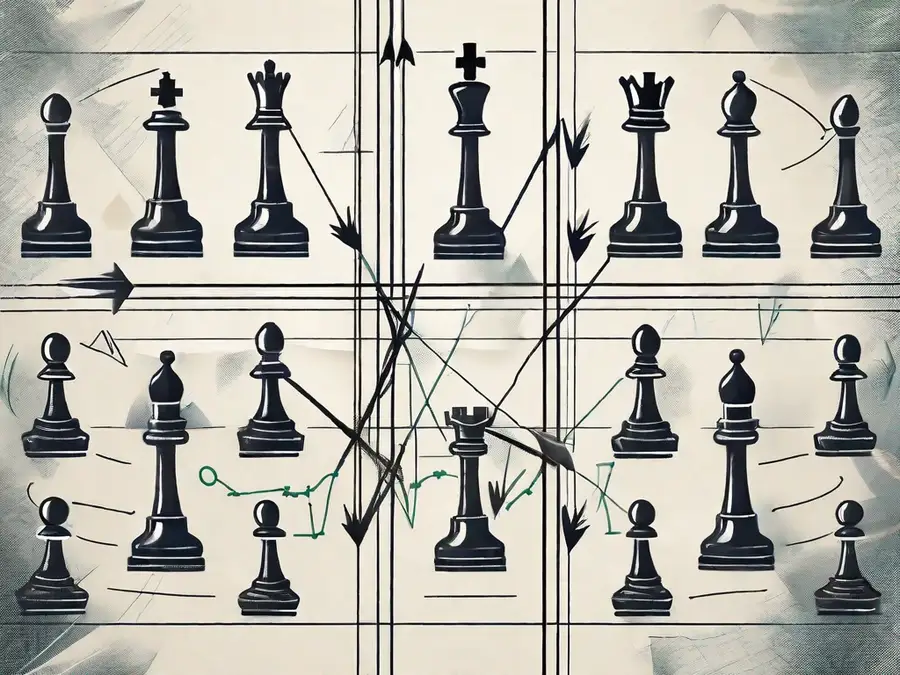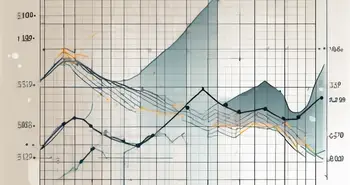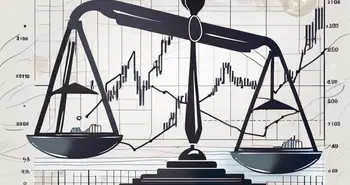Insider Strategies for Successful Order Flow Trading in Financial Markets

Order flow trading is a powerful tool that can provide traders with a deep understanding of the market dynamics. It involves analyzing the flow of orders to predict future price movements and make informed trading decisions. As a seasoned trader with over 20 years of experience in the financial markets, I've honed my skills in order flow trading and I'm excited to share some insider strategies that can help you succeed in this field.
Understanding Order Flow Trading
Before diving into the strategies, it's crucial to have a solid understanding of what order flow trading is. In essence, it's a form of trading that involves analyzing the volume and type of orders to predict future price movements. It's based on the premise that the best predictor of future price movements is the current and past behavior of traders.
Order flow trading is not about technical indicators or chart patterns. Instead, it's about understanding the market participants' behavior and using this knowledge to predict where the price is likely to go. It's a more direct method of trading as it doesn't rely on secondary data.
Key Elements of Order Flow Trading
There are several key elements in order flow trading that you need to understand to effectively implement this strategy. These include volume, bid-ask spread, and price action.
Volume refers to the number of shares or contracts traded in a security or market during a given period. It's an important indicator of the strength or weakness of a price trend. The bid-ask spread is the difference between the highest price that a buyer is willing to pay for an asset and the lowest price that a seller is willing to accept. It's a direct measure of market liquidity. Price action is the movement of a security's price and is often analyzed with respect to time.
Volume
Volume is a key element in order flow trading. High volume often indicates strong investor interest and can signal the start of a new trend. Conversely, low volume may indicate investor uncertainty or disinterest, which can signal a trend reversal.
As an order flow trader, I always keep a close eye on volume. For instance, if I see a sudden increase in volume, I know that there's a high probability of a price change. This allows me to position myself accordingly and take advantage of the price movement.
Bid-Ask Spread
The bid-ask spread is another crucial element in order flow trading. A narrow spread usually indicates high liquidity, which can make it easier to execute trades. On the other hand, a wide spread can indicate low liquidity, which can make it more difficult to execute trades and can lead to higher transaction costs.
During my early days as a trader, I learned the hard way the importance of considering the bid-ask spread. I once made a trade without considering the wide spread and ended up paying a hefty transaction cost, which ate into my profits. Since then, I always consider the bid-ask spread before making a trade.
Price Action
Price action is the final key element in order flow trading. It involves analyzing the movement of a security's price to predict future price movements. This can involve looking at past price movements, as well as current price behavior.
As an order flow trader, I've found that understanding price action can provide valuable insights into market behavior. For instance, if I see a sudden price movement without a corresponding increase in volume, I know that the price movement may not be sustainable. This allows me to avoid making trades based on false signals.
Strategies for Successful Order Flow Trading
Now that we've covered the basics of order flow trading, let's dive into some strategies that can help you succeed in this field. These strategies involve using the key elements of order flow trading to make informed trading decisions.
One strategy is to look for high volume areas. These are areas where a large number of orders have been executed. High volume areas often act as support or resistance levels, and the price is likely to react at these levels. Another strategy is to look for imbalances between buy and sell orders. These imbalances can indicate a potential price movement.
FAQs
What is order flow trading?
Order flow trading is a form of trading that involves analyzing the volume and type of orders to predict future price movements. It's based on the premise that the best predictor of future price movements is the current and past behavior of traders.
What are the key elements of order flow trading?
The key elements of order flow trading are volume, bid-ask spread, and price action. Volume refers to the number of shares or contracts traded in a security or market during a given period. The bid-ask spread is the difference between the highest price that a buyer is willing to pay for an asset and the lowest price that a seller is willing to accept. Price action is the movement of a security's price.
What are some strategies for successful order flow trading?
Some strategies for successful order flow trading include looking for high volume areas and imbalances between buy and sell orders. High volume areas often act as support or resistance levels, and the price is likely to react at these levels. Imbalances between buy and sell orders can indicate a potential price movement.
Ready to elevate your order flow trading with the strategies you've just learned? Embrace the future of investing with Morpher, the revolutionary platform that leverages blockchain technology for a seamless trading experience. With Morpher, you can trade across a diverse range of asset classes with zero fees, infinite liquidity, and the option for up to 10x leverage. Whether you're interested in stocks, cryptocurrencies, or even niche markets like NFTs, Morpher's unique Virtual Futures and fractional investing empower you to trade on your terms. Take control of your trading journey, maximize your strategies, and Sign Up and Get Your Free Sign Up Bonus today to start trading with an edge.

Disclaimer: All investments involve risk, and the past performance of a security, industry, sector, market, financial product, trading strategy, or individual’s trading does not guarantee future results or returns. Investors are fully responsible for any investment decisions they make. Such decisions should be based solely on an evaluation of their financial circumstances, investment objectives, risk tolerance, and liquidity needs. This post does not constitute investment advice.

Painless trading for everyone
Hundreds of markets all in one place - Apple, Bitcoin, Gold, Watches, NFTs, Sneakers and so much more.

Painless trading for everyone
Hundreds of markets all in one place - Apple, Bitcoin, Gold, Watches, NFTs, Sneakers and so much more.









